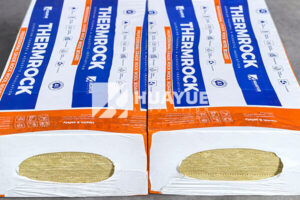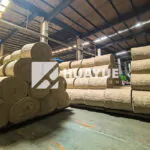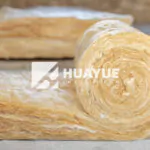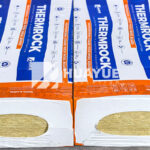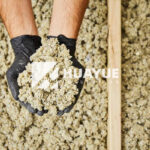What Is the Mineral Fiber Insulation R Value?
If you are picking insulation, you might worry about how well it really keeps heat inside. You also want safe and lasting options.
The R-value of mineral fiber insulation shows how well it keeps heat from moving through. Rock wool and glass wool fiber insulations usually offer R-values between 3.0 and 4.5 per inch, depending on density and thickness.
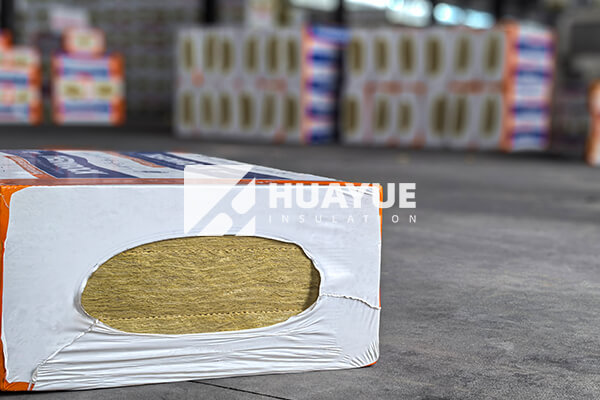
When I look at insulation jobs, the key factor is often the R-value. But there is so much more you need to think about. Let’s dive into what mineral fiber insulation is, why the R-value matters, and what makes rock wool unique for those looking for safety, sound protection, and long-term performance.
What is mineral fiber insulation?
Choosing insulation can feel tricky with so many technical terms and features to list. But mineral fiber insulation stands out for its strength and all-around usefulness.
Mineral fiber insulation is made from natural or synthetic minerals spun into fine fibers. This covers products like rock wool and glass wool, which trap air in their structure to offer strong thermal and sound performance.
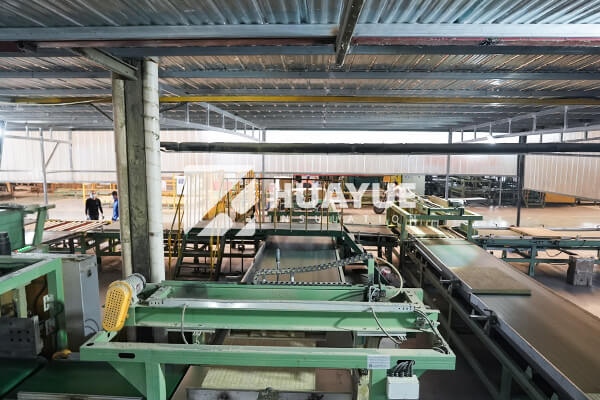
Mineral fiber insulation isn’t just “fluffy stuff” that fills your walls or tanks. It is made from volcanic rock (like rock wool) or recycled glass (like glass wool). Manufacturing involves melting these raw materials at high heat and spinning them into fibers—picture the process like making cotton candy. The resulting mats, boards, or rolls have millions of tiny air pockets, and these pockets trap air and slow down heat as it tries to pass through.
Not all mineral fiber products are the same. Rock wool insulation, for example, offers high fire resistance (Class A1 level). That’s especially important to people like me who specify insulation for critical chemical and industrial storage. At HUAYUE, we make rock wool in mats, rolls, boards, and pipe sections. Each form is tailored to where it’s needed: walls, roofs, tanks, or pipes. Plus, custom sizes and packaging solutions make it easy for big projects or special jobs. We often supply clients who demand ASTM-tested performance and fire safety, particularly for export markets in Europe and North America.
What is the R-value of Fibre insulation?
Whether you need to keep heat in or out, you probably care most about the “R-value.” But numbers can only tell part of the story.
The R-value of mineral fiber insulation like rock wool or glass wool commonly ranges from R-3.0 to R-4.5 per inch. The specific number depends on density, product thickness, and how it is installed.

I often remember a project where getting just the right R-value made all the difference to long-term energy savings. R-value is a measure of resistance to heat flow; the higher the number, the better the insulation. For reference, the R-value per inch of rock wool is usually around 3.3–4.2, depending on compression and installation. Glass wool is very close, too. The trick is matching insulation thickness and grade to the exact thermal needs of the application—cryogenic tanks need more, while wall sections might use something thinner.
You might see tables like this when comparing options:
| Insulation Type | Typical R-value per inch | Key Feature |
|---|---|---|
| Rock wool (min. fiber) | 3.3 – 4.2 | Fire & sound barrier |
| Glass wool (min. fiber) | 3.0 – 4.5 | Lightweight, flexible |
| Polyurethane foam | 6.0 – 6.5 | Higher R, less fire |
Be sure to check if the R-value listed is for factory tests or installed performance. Installation gaps, moisture, or compression all affect the actual R-value.
Factors Influencing the R-Value of Rockwool Insulation?
You can focus on the R-value, but what really shapes these numbers in a real-world job? It’s not as simple as a lab test might make you think.
Rockwool insulation’s R-value depends on thickness, density, installation method, and moisture levels. Properly sized, dense materials with tight, dry installation deliver the highest actual R-values.
There have been times when clients were puzzled why their insulation was not working as expected. I always start by asking about these four factors. First, thickness: each additional inch brings extra insulation. Second, density: denser products trap air more efficiently, but if too dense, they may conduct heat more. Third, installation: gaps, tears, or loose fitting all cut real-world performance. Fourth, moisture: rock wool is naturally water-repellent, but soaking any fiber insulation for long periods will lower R-value.
A closer look:
| Factor | How it Impacts R-value |
|---|---|
| Thickness | More thickness = higher R |
| Density | Right density helps trap air |
| Moisture | Water lowers R-value |
| Installation | Gaps reduce effectiveness |
In large tanks, walls, or complex piping, I work hard with installers to get the fit perfect, to maintain the right R-value. At HUAYUE, we offer custom-sized boards and rolls—and products that don’t lose their strength or shape when compressed or exposed to heat and chemicals.
Rock wool Insulation – Manufacturing Process?
If you want to know why rock wool insulation performs so well, you should look at how it is made. You’ll see why it resists fire, water, and chemicals.
Rock wool insulation is created by melting natural rock at over 1400°C, then spinning the molten rock into fibers, binding them, and forming them into mats, boards, or pipe shells.
I have visited many rock wool factories, and it feels a bit like walking into a foundry. Large amounts of basalt and slag (a natural byproduct) are melted until they are red-hot and flowing. After, this molten mixture is spun at high speed into fine, thread-like fibers. The fibers get a light binder for strength, then get pressed into different forms—soft rolls, firm boards, or curved pipe shells. The process is fast, clean, and allows for tight quality checks. Our HUAYUE lines use advanced controls that keep fiber diameter and density very consistent. Because we control the process, we can create large, custom-shaped pieces that keep their form even in hot or chemical-rich environments.
The final product resists fire, repels water, and doesn’t attract pests or grow mold. For export, we ensure our insulation meets ASTM and EN standards.
Benefits of Rock wool Insulation?
Thinking about which insulation to choose, you might worry about fire, noise, or even how long your investment will last without problems. Rock wool checks all the boxes.
Rock wool insulation delivers top fire resistance (Class A1), high R-values, moisture resistance, sound absorption, and durability, making it an ideal choice for industrial and commercial applications.
Countless times, I’ve seen projects where the choice of insulation saved both energy and lives. First, rock wool is fully fireproof and won’t burn—this makes it the go-to for large chemical tanks and high-rise buildings. Second, it is naturally water-resistant, so you don’t have to fear leaks or condensation like you do with foam. Third, rock wool’s structure blocks both low and high-frequency sounds; it’s often picked where noise is a problem. And finally, it is tough—it stays strong and effective for decades, even in harsh climates or when exposed to chemicals. At HUAYUE, we can ship tailor-made, certified products to project sites worldwide. We understand the need for reliability, safety, and compliance, and we provide consistent support from design to delivery.
Conclusion
Rock wool insulation offers high R-value, top fire safety, and long-term durability. It remains a trusted choice for buildings, industry, and anyone seeking comfort, safety, and performance.
You may also be interested in:
Ready to Get Started?
Get in touch with our experts for personalized solutions tailored to your needs.
Get Free QuoteLatest Articles
Let's Work Together
Ready to take your business to the next level? Get in touch with our team of experts and let's discuss how we can help you achieve your goals.
Get Free Solutions

